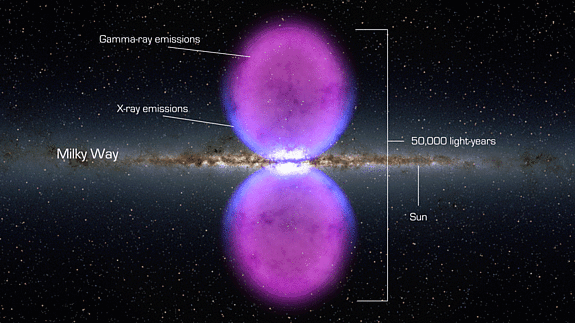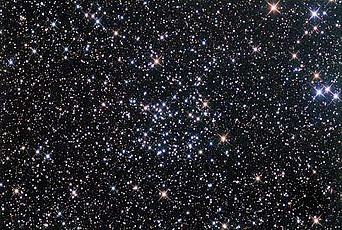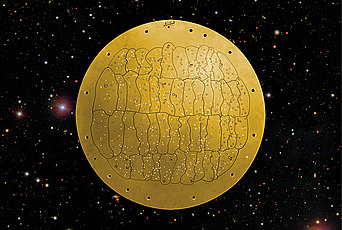Has the Mystery of the Gamma Rays from the Galactic Center Been Solved?

Five years ago, NASA’s Fermi Gamma-ray Space Telescope saw more gamma rays than expected from the area around the center of our galaxy. Many scientists suggest that the extra gamma rays could be from the annihilation of dark matter particles. This exotic interpretation, however, requires ruling out all other possible sources of the gamma rays. While working at IAS as Members in the School of Natural Sciences, Bence Kocsis and I have discovered an ideal candidate source.
Rapidly spinning neutron stars, called millisecond pulsars, emit gamma rays just like those seen by Fermi. They are known to be created in globular clusters, the dense stellar islands in the galactic halo beloved by astrophotographers. While the region around the galactic center has few globular clusters today, recent research suggests that it once had many. Nearly all of these clusters would have migrated inwards and dissolved, releasing their millisecond pulsars into space. The extra Fermi gamma rays may be the first direct evidence of our galaxy’s once-abundant globular cluster population.
Globular clusters are extraordinary environments. A star in the core of a globular cluster core could have hundreds of thousands of neighbors within a couple of light years; the Sun’s nearest neighbor is four light years away. The stars deflect one another gravitationally, driving some closer together and ejecting others out of the cluster entirely. Given enough time, the stars of a globular cluster will evaporate into space like molecules from a droplet of water.
Because their interactions can drive pairs of stars close together, globular clusters can make exotic stellar systems. Neutron stars have the masses of stars, but have collapsed down to the sizes of cities, making them trillions of times denser than lead. Millisecond pulsars are neutron stars that have further grown by consuming matter from a companion star. The pulsars spin up until they rotate hundreds of times per second and have more energy in their rotation than the Sun will emit over its ten billion year lifespan. They slowly radiate this enormous reservoir of energy in gamma rays, shining for many billions of years. Millisecond pulsars are also the best clocks known: their radio pulses keep time better than the best atomic clocks on Earth.
Millisecond pulsars are much more common in globular clusters than in our galaxy’s field of stars. They can also be longer-lived than the clusters themselves. While globular clusters evaporate and can be torn apart by the galaxy’s gravitational tides, their millisecond pulsars will continue to shine for many billions of years. Using recent calculations of our galaxy’s initial population of globular clusters, Kocsis and I have predicted the current gamma-ray signal. It is almost identical to what is seen by Fermi. The star clusters themselves have dissolved, leaving their millisecond pulsars to testify to their former existence.


